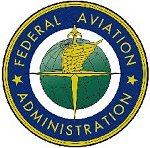Sun, Sep 03, 2006
Proposed Rule Follows Midway Runway Overrun
 Discussion of runway
length has been very much in the public eye this week, but after
last December's overrun accident of a Southwest 737 off a
snow-filled runway, the FAA immediately went to work analyzing
runway length decisions.
Discussion of runway
length has been very much in the public eye this week, but after
last December's overrun accident of a Southwest 737 off a
snow-filled runway, the FAA immediately went to work analyzing
runway length decisions.
The National Air Transportation Association (NATA) reports the
FAA conducted an internal audit into its own rules and regulations
and discovered about half of all air carriers did not have formal
procedures for determining safe runway length under less than ideal
conditions. Those operators who did make allowances for poor runway
conditions frequently had wildly varying rules.
The FAA cites as one example, the credit for the use of thrust
reversers in the landing performance data was not uniformly applied
and pilots may not have been aware of those differences.
Based on its findings, the FAA intended to immediately require
all part 91(K), 121, 125, and 135 turbojet operators to have
procedures in place to ensure a full-stop landing with at least a
15% safety margin beyond the actual calculated landing distance. On
Friday, however, the FAA agreed to hold off mandatory compliance
with the proposed rule.
 Sources at the NATA
tell ANN the organization welcomed Friday's issuance of a Safety
Alert for Operators (SAFO) titled “Landing Distance
Assessment at Time of Arrival for Turbojets.”
Sources at the NATA
tell ANN the organization welcomed Friday's issuance of a Safety
Alert for Operators (SAFO) titled “Landing Distance
Assessment at Time of Arrival for Turbojets.”
A SAFO is considered highly recommended, but not strictly
mandatory as would be an FAA regulation.
NATA states it convinced the FAA that their proposed rule was
regulatory in nature and thus required to follow formal rulemaking
processes which require a specific period of public comment and the
issuing of a Notice of Proposed Rulemaking (NPRM).
“The association is very pleased with the FAA’s
decision to issue this recommendation through a SAFO and not
through inappropriate regulation by notice or OpSpec [operational
specification]” said NATA President James K. Coyne. “No
federal agency is above the rulemaking process and the requirements
of the Administrative Procedures Act.”
More News
Aero Linx: JAARS Nearly 1.5 billion people, using more than 5,500 languages, do not have a full Bible in their first language. Many of these people live in the most remote parts of>[...]
'Airplane Bounced Twice On The Grass Runway, Resulting In The Nose Wheel Separating From The Airplane...' Analysis: The pilot reported, “upon touchdown, the plane jumped back>[...]
"Burt is best known to the public for his historic designs of SpaceShipOne, Voyager, and GlobalFlyer, but for EAA members and aviation aficionados, his unique concepts began more t>[...]
"Polaris Dawn, the first of the program’s three human spaceflight missions, is targeted to launch to orbit no earlier than summer 2024. During the five-day mission, the crew >[...]
There Are SO Many Ways To Get YOUR Aero-News! It’s been a while since we have reminded everyone about all the ways we offer your daily dose of aviation news on-the-go...so he>[...]
 ANN's Daily Aero-Linx (05.04.24)
ANN's Daily Aero-Linx (05.04.24) NTSB Final Report: Quest Aircraft Co Inc Kodiak 100
NTSB Final Report: Quest Aircraft Co Inc Kodiak 100 Aero-News: Quote of the Day (05.04.24)
Aero-News: Quote of the Day (05.04.24) Aero-News: Quote of the Day (05.05.24)
Aero-News: Quote of the Day (05.05.24) Read/Watch/Listen... ANN Does It All
Read/Watch/Listen... ANN Does It All




